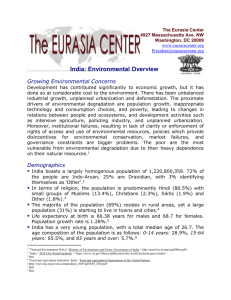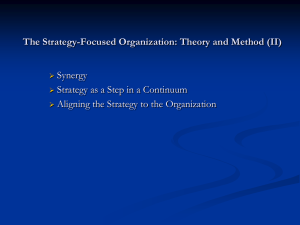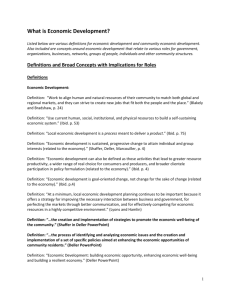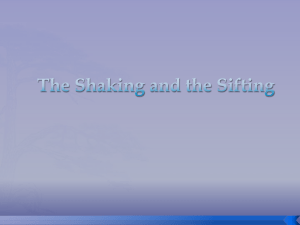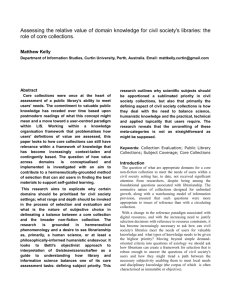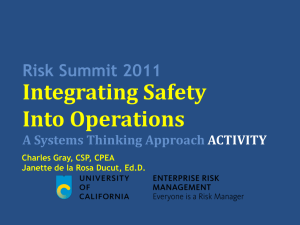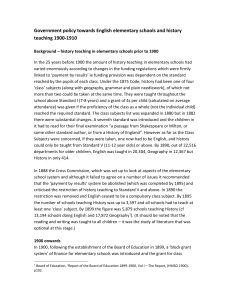The Accident Model 726KB Sep 20 2013
advertisement
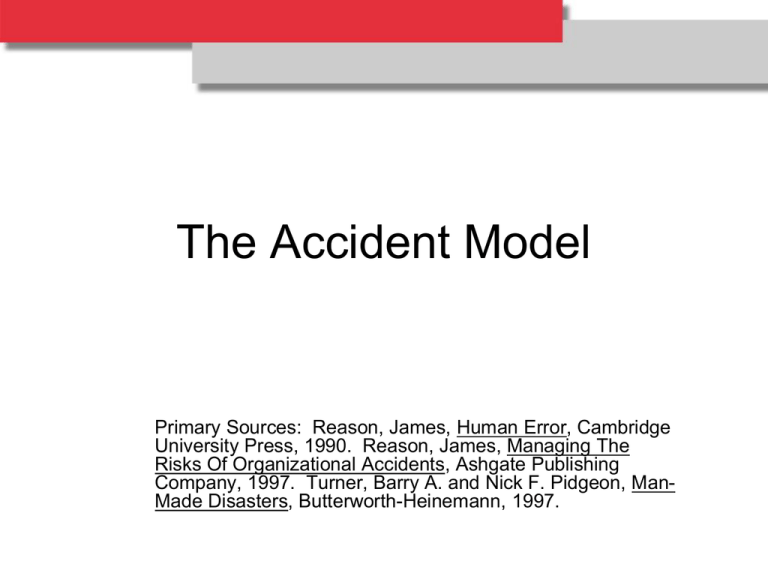
The Accident Model Primary Sources: Reason, James, Human Error, Cambridge University Press, 1990. Reason, James, Managing The Risks Of Organizational Accidents, Ashgate Publishing Company, 1997. Turner, Barry A. and Nick F. Pidgeon, ManMade Disasters, Butterworth-Heinemann, 1997. An Accident Model Triggering !@#$ Events % Acciden t or Other Loss Event May 2008 RC Management System ODM1 2 Barriers Triggerin g events Procedures Process Automation Maintenance Program Management Of Change Process Accident Reporting & Investigation Process Permits JEPs STACs Training Ibid. May 2008 RC Management System ODM1 3 Holes Can Develop Fatigue Triggerin g events Inadequate Job Planning Inadequate Maintenance Mistake Poor Teamwork Or Coordination Incorrect Tool Poor Quality Training Poor Judgment Ibid. May 2008 Information Or Communication Failure RC Management System ODM1 Acciden t Incident,or Other Loss Event 4 Layers In The “Swiss Cheese” Model Triggerin g events Strategy Layer “Local” System Layer Sharp End Layer May 2008 Ibid. RC Management System ODM1 5 Potential Sharp End Barriers Triggerin g events • Skills/knowledge • Judgment • Attention to detail Experience, knowledge/skills, health, aptitude, personality factors, internal performance standards, stress levels, task pacing, mental models, mental capability/acuity, vision, hearing, dexterity, physical capability, etc. Ibid. May 2008 Sharp End Barriers RC Management System ODM1 6 Examples Of Sharp End “Holes”? Triggerin g events Exceeding individual abilities Lack of knowledge or skill Fatigue Task overload Stress Poor judgment Sharp End Misperception of hazard, lack of hazard awareness Ibid. May 2008 RC Management System ODM1 7 Potential System Barriers Triggerin g events • Procedural guidance • Problem resolution • Review/verification System Barriers Tools & equipment, human-machine interfaces, oversight, training, local planning/scheduling, leader-worker ratios, pay, local culture, morale, procedures, standards, specifications, work practices, local performance May 2008 RC Management standards, local information flow,System localODM1 industry influences, etc. 8 Ibid. Examples of System “Holes”? Unworkable or ambiguous procedures Triggerin g events Poor coordination or teamwork Poor quality training System Inadequate maintenance Misperceive hazard Poor Judgment May 2008 Ibid. Inadequate staffing allocation RC Management System ODM1 9 Potential Strategy Barriers Triggerin g events Strategy Barriers • Structure • Leadership • Risk management • Culture Strategic decisions, forecasting, budgeting, resource allocation, planning/scheduling, leading, auditing, corporate culture, information flow and availability, clarity of objectives, etc. May 2008 Ibid. RC Management System ODM1 10 Examples of Strategy “Holes”? Triggerin g events Strategy Inability of organization to learn Excessive cost cutting, inadequate budget Poor judgment Inadequate risk awareness or management Poor selection of personnel Ibid. May 2008 Ambiguous responsibilities RC Management System ODM1 11 Triggering events Changes in one layer can affect other layers. Accident Triggering events Holes can develop at any time. Vigilance. System ODM1 May Barrier 2008 Maintenance requires Constant RC Management Accident 12 Complex Systems The more complex (interconnected & tightly coupled) the system, the more prone it is to fail in ways we didn’t anticipate. – More combinations that can lead to failure. – The odds of any one combination is extremely remote, but the likelihood that one will occur, sooner or later, is high. – Many combinations we consider impossible aren’t impossible at all - they just take longer. The Powerball Lottery’s Evil Twin ! May 2008 RC Management System ODM1 Inviting Disaster, James R. Chiles, referencing the work of Charles Perrow 13 So What Does That Mean? Safety is a “Dynamic Non-Event” The more dynamic the system, the less safety is ‘bankable’. In a dynamic system, you can’t ‘fix’ the safety problem, store up safety, and then move on to something else. If a system has been failure-free for sixty-seven days, that doesn’t mean that the system is safe. All it means is that the unexpected has not escaped containment. Avoid the “tick off” phenomenon May 2008 RC Management System ODM1 14 Source: Reason, ibid., and Weick Karl E. and Kathleen M. Sutcliffe, Managing the Unexpected: Assuring High Performance in an Age of Complexity, Vol. 1, Jossey-Bass Inc., 2001. Triggerin g events Strategy System Sharp End Acciden t incident, or May 2008 RC Management System ODM1 other negative event 15 Page 36 Lessons? The barriers can be interdependent … closing a hole in one area can open a hole somewhere else EHS is a “dynamic nonevent” … it takes a lot of activity for nothing to happen Safety critical errors can happen at any level of the system Avoid the “Tick Off” phenomenon … we need to monitor and optimize our EHS processes May 2008 ! RC Management System ODM1 The “Swiss Cheese” accident model can be used with our existing RCI Process Latent failures can exist for a long time before contributing to an event 16 How to use this information? When conducting RCIs and Determining Corrective Actions: – Identify the sharp end failure(s) – Determine what management systems could have contributed to the incident. • Was a system missing? • Does something in the system need to be improved or added on to? – Are there company strategic decisions that impacted this incident? Example Triggering events Corporate Incident sharing inadequate Strategy Organization Redesign inadequate System Training - inadequate Inadequate hazard mitigation Sharp End Personal decision Procedure – inadequate Incident After completion of an RCI, we can go back and take a second look at the results from the perspective of the accident model … asking “Have we identified the holes at each layer? If we haven’t identified the holes at each of the three layers, can we justify that May 2008 RC Management System ODM1 18 those layers were bypassed or not involved?” If not, then we’ve missed something.

